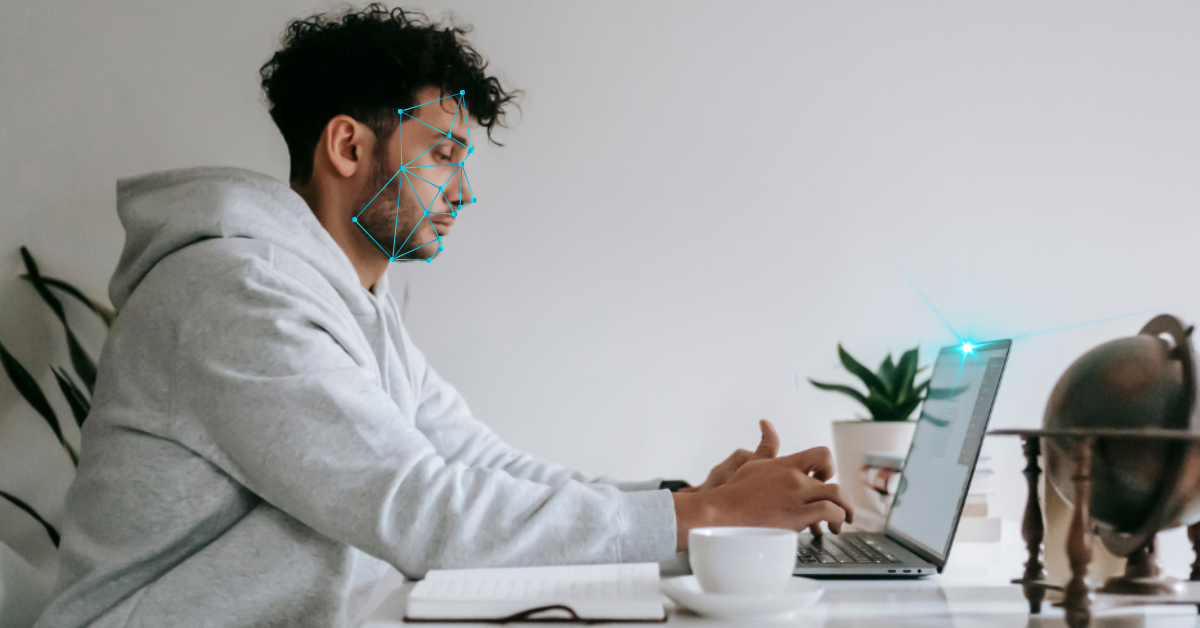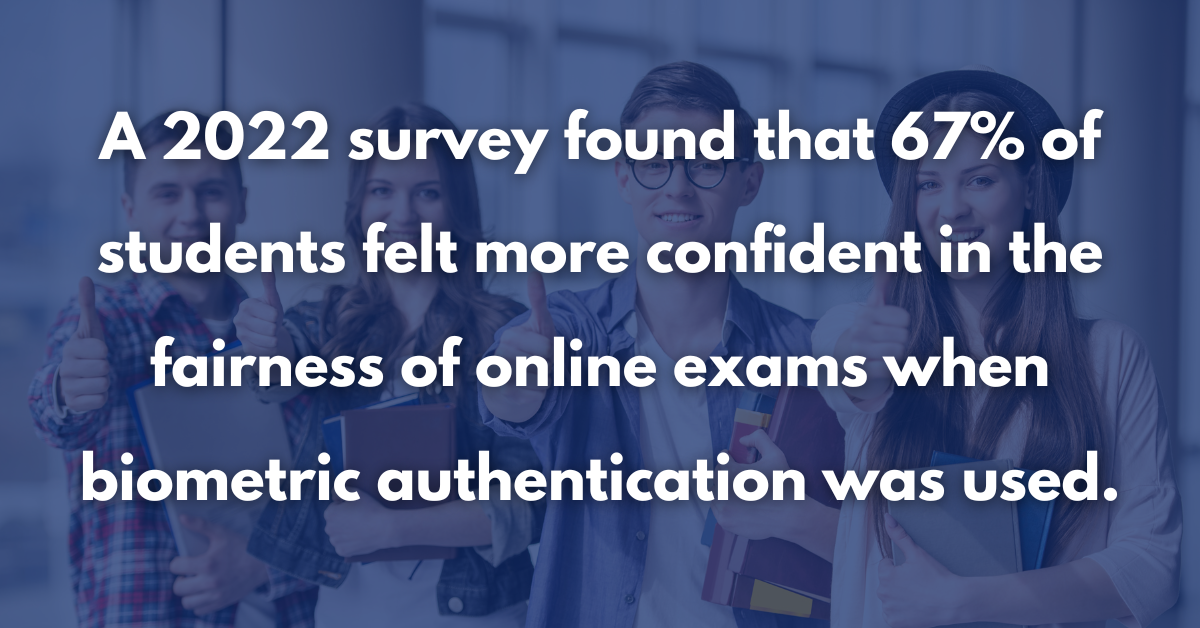Categories
Imagine studying hard for an online exam, only to worry that someone else might cheat their way to a better score—frustrating, right? With education moving online, keeping remote exams fair has become a real challenge, but remote test authentication using biometrics is here to help. This technology uses unique traits like your face or voice to confirm it’s really you taking the test, stopping cheaters in their tracks in today’s digital world.
In this article, we’ll dive into how remote test authentication works, why it’s so crucial, examples of it in action, its benefits, the hurdles it faces, global adoption trends, and what’s next for this game-changing approach.

Remote test authentication uses biometric traits—such as facial recognition, voice patterns, or fingerprints—to confirm a student’s identity during online exams. Students enroll their biometric data prior to the test, which is then verified in real time, ensuring that only the registered individual participates. This method addresses the vulnerabilities of traditional authentication, like passwords, which can be easily shared or stolen, making it a critical tool for maintaining academic integrity in remote settings.
The digital world has transformed education, but it has also amplified opportunities for exam fraud, making remote test authentication essential.
A 2023 study in Pakistan found that 60% of students admitted to cheating frequently during online exams, often by having others take tests for them, highlighting the need for secure identity verification in remote settings.
Remote exams lack direct supervision, increasing the risk of cheating behaviors like using unauthorized resources or collaborating with others, which remote test authentication can mitigate by ensuring continuous identity verification throughout the test.
Passwords or ID cards can be shared or stolen, enabling impersonation. Biometrics, being unique to each individual, make it significantly harder for fraudsters to bypass authentication, ensuring exam integrity.
With platforms like Coursera and edX serving millions globally, ensuring the authenticity of each student in remote exams is critical to maintain credibility, especially for certifications that impact career opportunities.
Along with in-person exams, biometric technology is being adopted globally to secure remote exams, ensuring fairness and preventing fraud in digital education environments.
Pearson VUE, a global leader in certification testing, uses facial recognition for remote test authentication in its online proctoring services.
According to their 2023 security protocols, candidates must perform a facial scan before starting their exam, which is compared to their ID photo to verify identity, ensuring secure delivery of high-stakes certifications like IT and medical exams.
ProctorU, a prominent online proctoring service, has integrated facial recognition for remote test authentication since 2021.
A 2022 report by EdTech Magazine highlighted that ProctorU verifies student identities by matching live facial scans with ID photos during remote exams, a method used by universities like Western Governors University to prevent cheating in online assessments.
Biometric test authentication brings powerful advantages to both students and educational institutions, making online exams more secure and user-friendly. By preventing proxy cheating, biometrics ensure the test-taker’s identity matches the registered student, as seen with the 2025 JAMB arrests of 40 impersonators in Nigeria, while also offering convenience through quick authentication via facial scans or voice commands, eliminating the need for complex passwords.
Additionally, these systems are highly scalable, capable of handling large volumes of students in massive online courses where manual verification would be impractical, ensuring fairness and efficiency across diverse educational settings.
Implementing remote test authentication in online education brings significant hurdles, especially for students acting as remote workers in diverse environments. These challenges can hinder the effectiveness and equity of biometric systems in securing remote exams.
Students may resist sharing biometric data for remote test authentication due to fears of breaches, as seen in cases like the 2023 Aadhaar leak in India, where millions of biometric records were compromised, eroding trust in such systems.
Inconsistent internet or outdated devices, like low-resolution webcams, can disrupt facial recognition during remote test authentication, as reported in 2022 by EdTech Magazine, where 15% of online proctoring sessions failed due to connectivity issues, potentially barring legitimate students.
Students in rural regions often lack reliable internet or high-quality devices, critical for remote test authentication. For instance, a 2023 UNESCO report noted that 43% of sub-Saharan African students couldn’t access online education due to poor infrastructure, creating inequities in exam access.
Deploying biometric systems for remote test authentication requires costly hardware, like advanced cameras, which can be prohibitive for smaller institutions. A 2024 study estimated that outfitting a mid-sized university with biometric proctoring could cost $50,000 annually, limiting scalability.
The adoption of biometric test authentication is gaining momentum worldwide as educational institutions seek to secure online assessments. In the U.S., the use of biometric proctoring has grown significantly, with 65% of online universities employing facial recognition for remote exams by 2025, according to a report by Educause, reflecting the shift toward digital education post-COVID.
In Asia, countries like India are exploring voice biometrics for remote test authentication, with a 2023 pilot by the Indian Institute of Technology showing a 20% reduction in cheating incidents during online entrance exams.
Meanwhile, in Europe, GDPR compliance has slowed adoption, with only 30% of institutions using biometrics for exams due to stringent data protection laws, highlighting the varied pace of global implementation driven by regulatory and infrastructural differences.

The future of remote test authentication is poised for innovation as technology evolves. Multimodal biometrics, combining facial recognition with voice or behavioral patterns like keystroke dynamics, could improve accuracy and security in online exams. AI-driven liveness detection will likely become standard to prevent spoofing attempts, such as using photos to trick facial recognition systems. Additionally, integrating biometrics with blockchain could ensure tamper-proof exam records, providing a verifiable audit trail for remote assessments.
Biometric test authentication is reshaping academic integrity in 2025, with biometrics offering a reliable solution to combat cheating in online exams. From Pearson VUE’s facial recognition to ProctorU’s implementation, the technology is proving its value. However, addressing privacy, technical, and cost challenges will be crucial to its global adoption, ensuring fair and secure remote assessments for students worldwide.